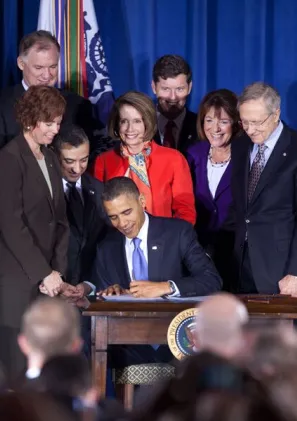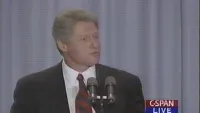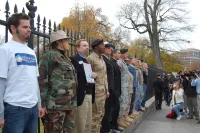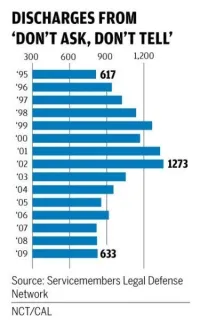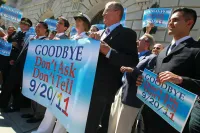-
A Brief History of “Gays in the Military,” The Repeal of “Don’t Ask, Don’t Tell”
"The policy I am announcing today is, in my judgment, the right thing to do and the best way to do it. It is right because it provides greater protection to those who happen to be homosexual and want to serve their country honorably in uniform, obeying all the military's rules against sexual misconduct. It is the best way to proceed because it provides a sensible balance between the rights of the individual and the needs of our military to remain the world's number one fighting force. As President of all the American people, I am pledged to protect and to promote individual rights. As Commander in Chief, I am pledged to protect and advance our security. In this policy, I believe we have come close to meeting both objectives."
- President Bill Clinton
"So this morning, I am proud to sign a law that will bring an end to 'Don’t Ask, Don’t Tell.' It is a law -- this law I’m about to sign will strengthen our national security and uphold the ideals that our fighting men and women risk their lives to defend. No longer will our country be denied the service of thousands of patriotic Americans who were forced to leave the military -– regardless of their skills, no matter their bravery or their zeal, no matter their years of exemplary performance -– because they happen to be gay. No longer will tens of thousands of Americans in uniform be asked to live a lie, or look over their shoulder, in order to serve the country that they love."
- President Barack Obama
Lesbian, Gay, Bisexual, and Transgender (LGBT) people have been serving with distinction in the U.S. armed forces since the founding of our nation. Through nearly all of that time there has been in place a policy (which took various forms throughout history) stating that such individuals were incompatible with military service. It was not until the World War II era that a more formal declaration that homosexuals were psychiatrically unfit to serve would become codified – though the policy’s enforcement fluctuated with the degree to which active military engagement was in effect. In 1975 Sgt. Leonard Matlovich’s declaration of his homosexuality to his commanding officer in the Air Force thrust the idea of gays serving openly in the military into the national consciousness – setting off a firestorm of controversy that would rage for decades. When President Bill Clinton threatened to make good on his campaign pledge to lift the military’s gay ban in the early 1990s, the U.S. Congress moved swiftly to introduce legislation that would have codified into federal law what had been only military policy. As a compromise, Clinton signed Defense Directive 1304.26 on December 21, 1993 which forbade military personnel from discussing being gay (lest they be discharged) and equally forbade military personnel from inquiring. Known colloquially as “Don’t Ask, Don’t Tell,” the policy pleased almost no one. After 16 years of constant legal challenges, political posturing, endless polls, electoral turnovers, and the ongoing evolution of LGBT acceptance in every other pocket of society, the necessary elements moved into place to clear the way for the final U.S. Senate vote to repeal the policy on December 15, 2010. President Barack Obama signed the order on December 27, 2010. Per the requirements of the directive, elaborate steps were taken to devise the most effective and efficient means to integrate openly LGB troops in the armed forces. The ban was fully lifted on September 20, 2011. In the 17 years “Don’t Ask, Don’t Tell” was in place over 14,000 qualified soldiers were discharged at a cost of nearly $500,000,000. Virtually no problems have been reported since its repeal. Unfortunately, the fate of transgender service members still hangs on the balance…
Demography
Nations Affiliated United States
Era/Epoch Information Age (1970-present)
Resources
